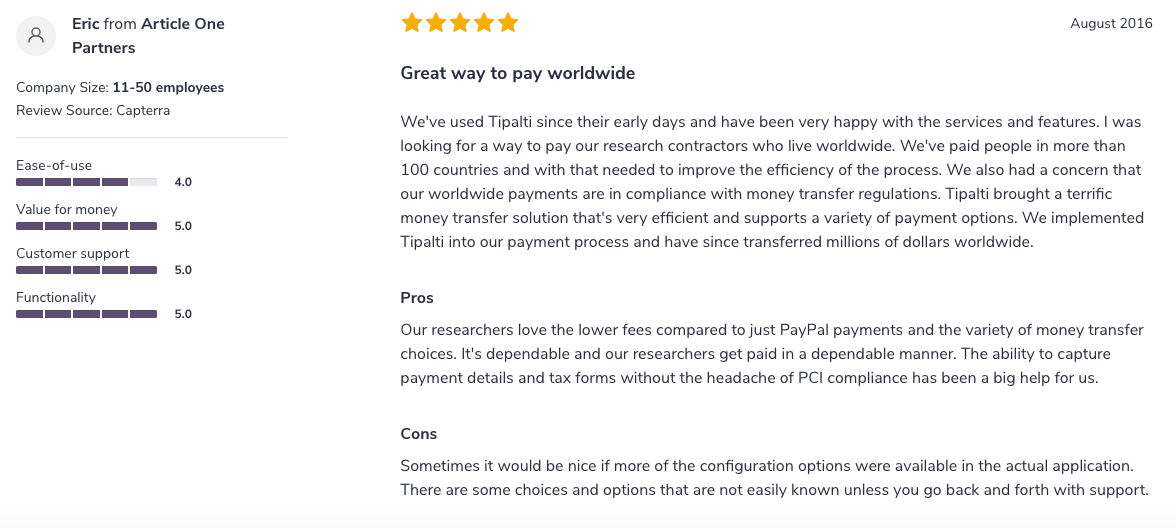
Get weekly
HubSpot updates
It’s no secret that for SaaS companies, customer referrals are one of the most rewarding ways to generate leads for your business. This is because your service-based product is mostly experiential – you’re asking people to spend money on something they cannot touch, taste, smell or hold in their hands.
So, the best option for a potential customer to gain reassurance that you’re the right company for them is to get recommendations and reviews from their friends, peers, and business partners. Studies show that referred leads have a 60% closing ratio compared with non-qualified leads.
A customer referral program will help you to identify your company’s advocates (the referrer) and onboard new clients who are likely to be far more receptive to your proposition. This process enables you to reward your real fans while gaining new ones with very little investment, helping to keep your business lean while you grow.
So, if you’re keen on the idea of implementing customer referrals as a growth tactic in your marketing strategy, here are a few key points to help set you up for success:
1. Two-sided referral incentives
Don’t be stingy. If you’re asking your loyal customers to take time out of their day to talk your business up to their friends, you need to acknowledge and reward the value in that interaction.
Make sure that you offer a worthwhile incentive to the referer, regardless of whether they get you a successful sign-up or not; after all, they have no say in the final decision of the other person, but they have put in the effort to help you out.
Equally, in order to get the referee through the door, there should be an incentive for them to sign up too. This not only sweetens the deal but creates an all-around positive experience for everyone involved, helping your customers to perceive your business as genuinely invested in satisfying its clients.
2. Ask at the right time
Making a sale, particularly for SaaS businesses, can be a long and drawn out process, one that requires a lot of mental effort from the client’s side. They have to weigh up all the features of your product against your asking price and consider all the technical and operational aspects that will be affected once your software is introduced into their company.
Furthermore, with a service-based product, your client will need time to experience and live with it for a little while before they become a convincing evangelist. Don’t be pushy and start asking for referrals the minute the transaction is complete.
Consider conducting a study into how long it takes for new clients to start seeing the benefits of using your service and time your approach accordingly. You can then reach out via email or a follow-up call to see how things are getting on, to offer support and also gain perspective on when it may be suitable to ask to be recommended.
3. Customer service is an ecosystem
In a world where customer reviews are abundantly available online, you cannot afford to fail on the service front. Make sure that your client-facing staff, as well as the support infrastructure you have in place, is efficient and geared towards serving the needs of your customers. If you get your service delivery game right, you will reap the rewards of a happy customer base through positive reviews, social media mentions and recommendations.
You also need to manage expectations, prove your reliability through carrying out your promises and delight your customers by exceeding standards. This is the best way to ensure that you get more referrals – people will not put themselves out by recommending a company that has poor customer service delivery because it reflects badly on them.
You have to put in to get out, and it all begins with the investment you make in improving your customer’s experience whenever they interact with your company.
4. Make it easy
Be careful not to demand too much from your happy customers; while they may be willing to refer you to their contacts, they are not likely to engage with a complicated process that requires them to fill out loads of forms or spend a long time on the phone.
Make the referral process easy and intuitive. If you’ve sent an email to the customer a few weeks after the purchase and asked them to invite other users to your platform, make sure you have an attention-grabbing CTA and that you have listed the benefits of the referral process clearly.
Create a template that they can use when forwarding your details onto their contacts, or create the email yourself and simply request the client to fill in the email address of the person they are recommending your business to.
5. Don’t kill the positive feedback vibe
Many businesses miss out on crucial opportunities. They are doing all the right things in creating a fantastic customer experience, providing an excellent product and after-sales support. However, they are still missing out on sales by not acknowledging the positive feedback they receive.
If your business is getting reviews online, you should be keeping an eye on those and turning negative ones around by offering further support or using the positive ones to attract more customers. While in some cases it may not be feasible to monitor and respond to every comment across every platform (although you should really be trying to), you should identify any industry-specific platforms where customers are rating your business and focus on responding to comments proactively.
For example, let’s take a look at this review of accounting software firm Tipalti on SoftwareAdvice.com:

Eric from Article One has left a very comprehensive review for Tipalti and is evidently satisfied with the software solution, the fact that he has been objective and mentioned the pros, as well as the cons, makes the review more genuine and reliable for potential users, but ultimately, it’s a positive 5-star review. To make the most of this kind of feedback, Tipalti could contact the user to thank them for the time they have taken to review their company. Tipalti may even wish to act on the suggestions that the client has made, helping to reinforce the positive relationship and enabling them to ask for a reference.
6. Facilitate networking events
At SpotDev, we regularly host networking events for businesses and entrepreneurs from the local area. These events are open to everyone, regardless of whether they are our clients or not, to come along and gain valuable insights into digital marketing from our experts.
These kinds of events help us to promote a positive user experience, touch base with existing clients in a more informal setting and also help to introduce local businesses to one another. All of these efforts create a positive loop which places us at the centre of a thriving business community that knows it can rely on us for high-quality marketing services. It’s important to invest in similar events to help create a human face for your business and potentially establish new links not just for yourself but for your customers, too – win-win.
Word-of-mouth is an invaluable tool when it comes to growing your business in the digital age. Understanding your audience and targeting your most loyal advocates is a proven method to grow your userbase.
Having a clear outline of your buyer personas will also help you to eliminate low-quality leads and invest your referral program resources in the right people. It does not have to be expensive or excessive, and you should certainly not push for referrals from clients who are not as invested in your business. Knowing how to nurture these clients and approach them at the right time is crucial to get a return on investment when asking for referrals.
Remember, however, that a referral program is a tactic that fits into your overall marketing strategy, so it’s important to create all of the infrastructure necessary to support customers through the sales funnel, regardless of their entry point.

